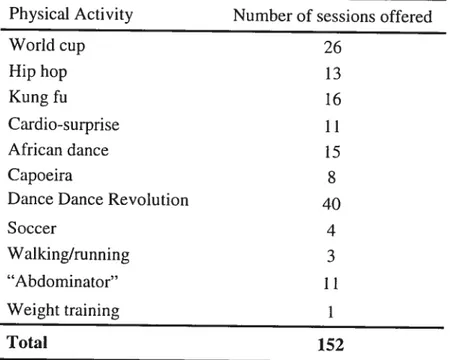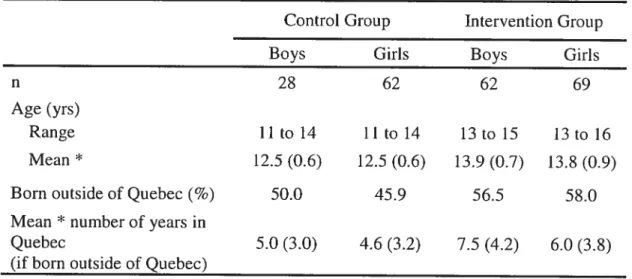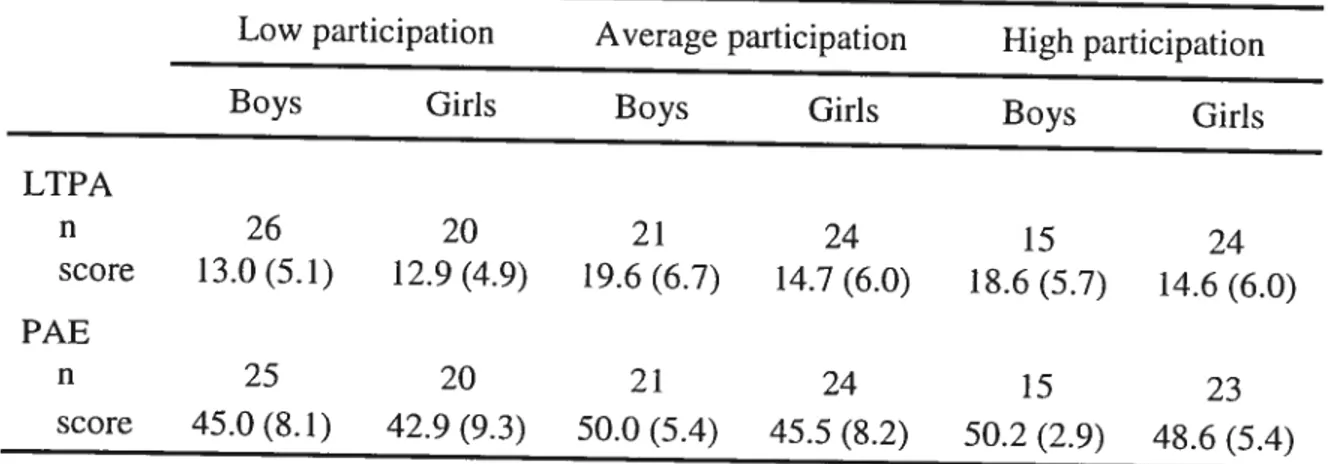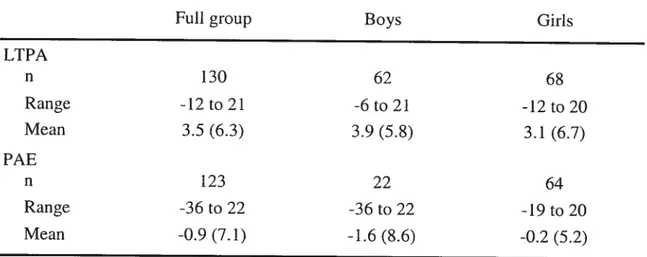Sports, physical activity and academic performance : promoting physical activity among adolescents
Texte intégral
Figure




Documents relatifs
ذﯾﻣﻼﺗﻟا ﺔﺳرﺎﻣﻣ ﺔﺑﺳﻧ ﻲﻓ ﻲﻋﺎﻣﺗﺟﻻا لﺻاوﺗﻟا لﺋﺎﺳو رﯾﺛﺄﺗ ىدﻣ لوﺣ ةذﺗﺎﺳﻷا تﺎﺑﺎﺟإ لﺛﻣﯾ 12 ﺔﯾوﺑرﺗﻟا تﺎﺳﺳؤﻣﻟا لﺧاد ﻲﺿﺎﯾرﻟا ﻲﻧدﺑﻟا طﺎﺷﻧﻠﻟ 142. فرط نﻣ ﻲﻋﺎﻣﺗﺟﻻا لﺻاوﺗﻟا
The present study, therefore, was aimed at applying the TTM to examine the structural relationships between stages of change, self-efficacy, decisional balance, processes of change,
Missing values were found in the variable age (only at baseline) and in the IPAQ time variables (days and minutes), which were used to compute the main outcome variables, such as
Many behavioral change interventions that target fatigue in cancer survivors use phys- ical activity goals such as increasing physical activity and/or physical exercise
For their part, Weston, Petosa, and Pate (1997) and Trost, Ward, McGraw, and Pate (1999) have shown that a previous-day activity recall was a valid strategy to measure
If we are aiming to help students develop physical activity habits that offer an appreciable number of health and cognitive benefits, part of the changing of students’
The aim of this study was to assess the effects of age and type of physical activity on anthropometric measures of obese youth participating in an
The aim of this study was examine differences in school recess physical activity in children attending schools in low and high SES areas. The major findings were that: 1) recess


